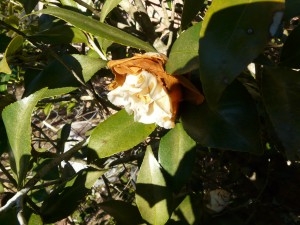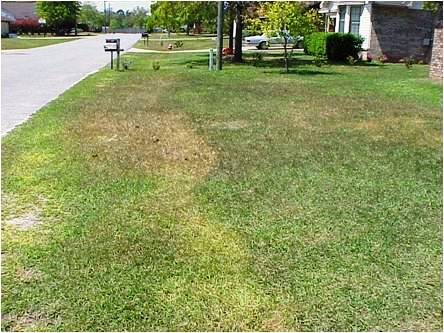
by Larry Williams | Mar 17, 2015
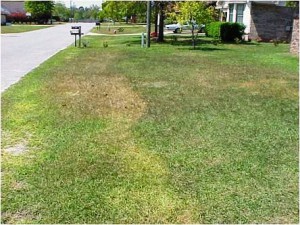
Cold injury to lawn from too early fertilizer application. Credit: Larry Williams
It’s too early to fertilize our warm-season lawn grasses now. This includes the use of fertilizers contained in weed-and-feed products.
There are a number of reasons why it’s best to wait to fertilize your lawn.
First, the soil temperature is too cool for grass roots to have access to some of the fertilizer elements. For example, iron and potassium are poorly available until the soil warms up in spring. Some nutrients leach below the grass roots because the lawn can’t use them yet. This results in waste of fertilizer, time and money.
Secondly, fertilizing too soon can induce nutrient deficiencies and off color areas in your lawn. This is one cause for bright yellow areas in lawns during early spring. Nitrogen is readily taken up by the lawn, even under cool soil conditions, and stimulates early green growth. Early lawn growth is dependent on iron also being readily available. However, iron is poorly available under the cool soil conditions of late winter and early spring. Therefore lawns turn yellow in areas due to an iron deficiency caused by an early fertilizer application. Many times, as soil temperatures warm during mid April and May, the iron becomes available and the lawn turns green. So why not avoid this scenario by waiting until mid April to fertilize your lawn?
It takes consistently warm night temperatures to allow the soil to become warm enough for best root growth and optimal uptake of fertilizer.
Thirdly, the young, tender grass roots that are beginning to grow in early spring are easily burned by the fertilizer.
Fourthly, fertilizing too early can stimulate early lawn growth, which is tender and easily injured by a late frost. The average date for our last killing frost is mid March.
Also, be very cautious about using weed-and-feed products that recommend a late winter application. These products are usually high in nitrogen, which will cause your lawn to begin growing too early. If you’re trying to control weeds, it’s best to apply your herbicides separately from fertilizer, anyway.
In North Florida, it’s best to wait until your lawn has completely greened up in spring before applying any fertilizer.
Waiting allows for more efficient use of the fertilizer. You will not injury you lawn by waiting to fertilize but you can certainly injure your lawn by fertilizing too early.
So, have patience, allow your lawn to green up on its own and then fertilize, even if it’s not until mid April or May.
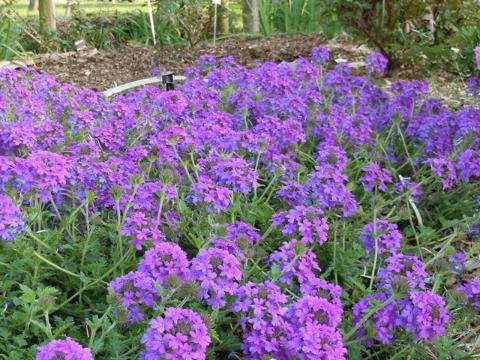
by Larry Williams | Mar 13, 2015
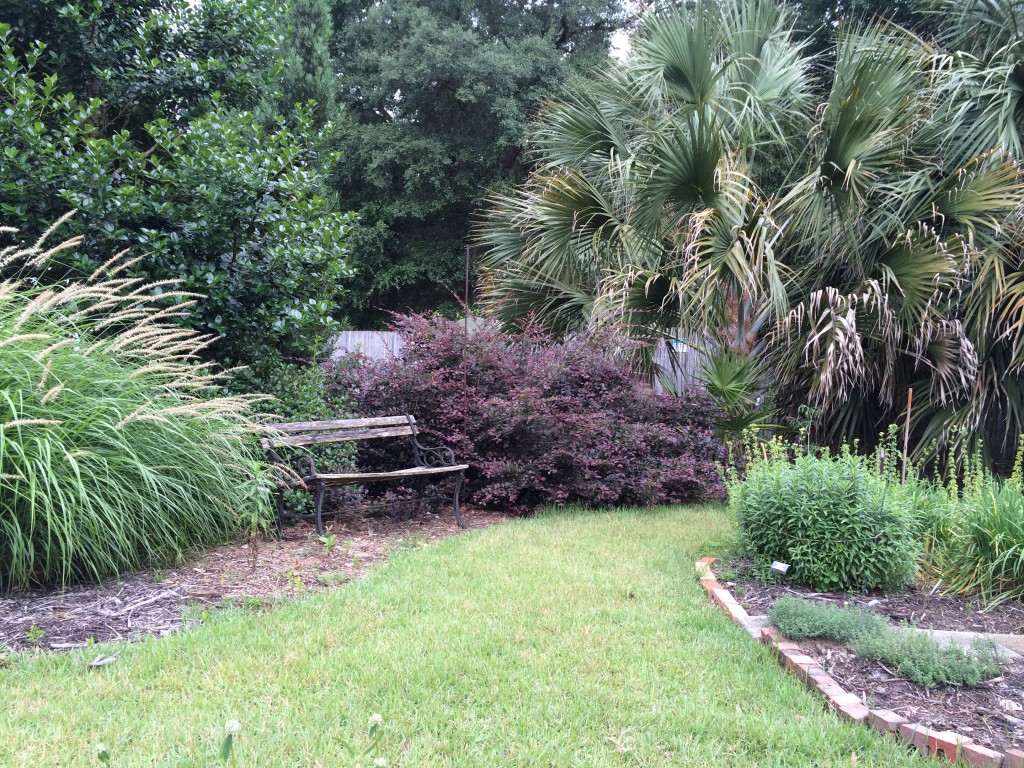
Photo by Mary Derrick, UF IFAS
Upcoming lawn & garden seminars
With spring on its way, your local University of Florida Extension Office in Okaloosa County is providing lawn and garden seminars for the public.
Plan Before You Plant Seminar: Take the guesswork out of vegetable gardening and join Okaloosa County Master Gardener Lee Vanderpool as he presents this seminar on planning your vegetable garden. Topics covered will include creating a plan for planting, interplanting and companion planting, planning for raised beds and container gardening. This is the first of our monthly seminars scheduled for the 3rd Wednesday of each month now through October. This first seminar will be held Wednesday, March 18 from10 to 11 a.m. at the Extension Annex located at 127 Hollywood Boulevard in Fort Walton Beach. For more information and to register, please call the Okaloosa County Extension Office at 850-689-5850. Space is limited.
Controlling Tomato Pests in the Home Garden Seminar: If you plan to grow tomatoes this year, plan to attend this seminar. Learn how to identify and control many of the insect and disease pests associated with growing tomatoes in the Florida home garden. I will provide this seminar on Thursday, April 2 from 9 a.m. to noon at the Okaloosa County Extension Office, 3098 Airport Road in Crestview. Please register for this program by calling the Okaloosa County Extension Office at 850-689-5850. Space is limited.
Lawn Care in Northwest Florida Seminar: I will provide this seminar as a First Tuesday Series program at the Crestview Public Library on Tuesday, April 7.
Many people become frustrated with their lawns here in Florida. Our climate, sandy soils and pest problems are unique compared to most areas of the U.S. Most people follow incorrect lawn care practices in Florida. As a result, they waste money, water, fertilizer and end up with a disappointing lawn.
This program begins at 10:30 a.m. with coffee and cookies served starting at 10 a.m. at the Crestview Public Library. The library is located at 1445 Commerce Drive (behind the Post Office). Call the library at 682-4432 or the Okaloosa County Extension Office at 689-5850 for more information.
There is no cost to attend these seminars but space is limited. So please preregister. Larry Williams, UF/IFAS Extension Agent, Okaloosa County, March 12, 2015
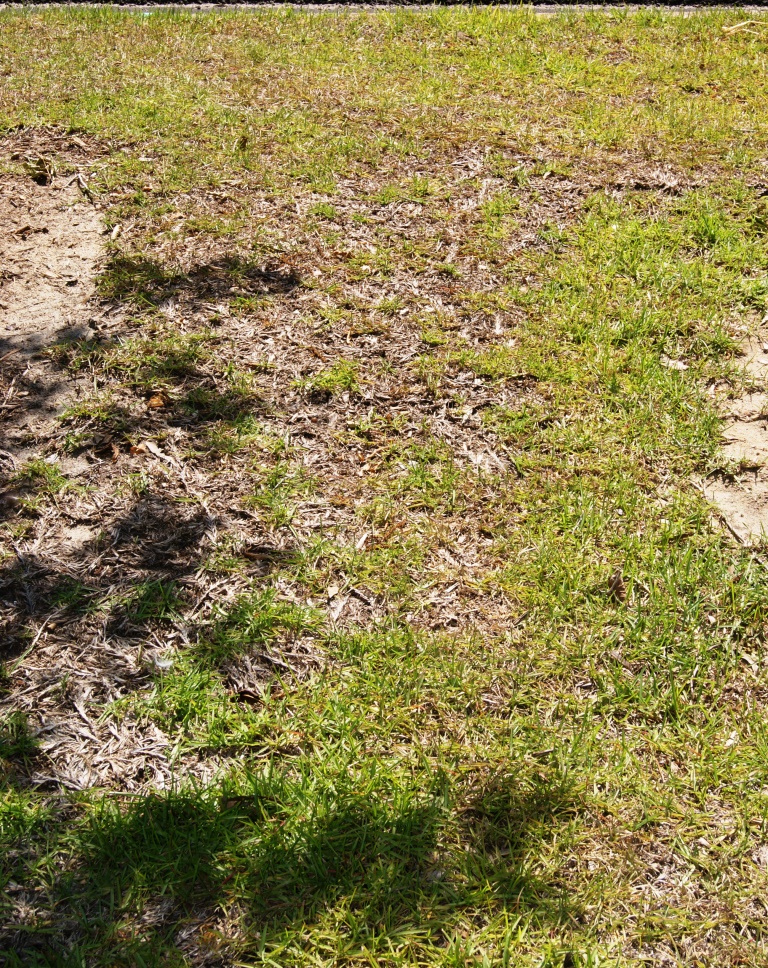
by Larry Williams | Feb 17, 2015
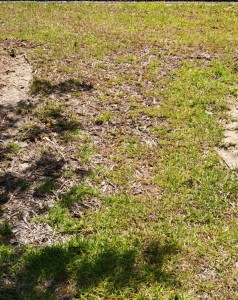
Diseased Turfgrass – Image Credit Matthew Orwat
With a few nice late winter days, many people get a good dose of spring fever. But be careful when the fever hits you. Don’t fertilize your lawn too early. The fever may turn into a lawn “headache”.
Wait to fertilize. Fertilizing while the soil is too cool can result in nutrient deficiencies such as iron deficiency causing yellow areas in the lawn. Fertilizing early can result in injury to a lawn’s roots from fertilizer burn. Or tender growth promoted by an early fertilizer application may be injured by a late frost or freeze. Have patience, allow the lawn to green up on its own and then fertilize, even if it’s not until mid April or May.
Get the numbers right. Our lawns need almost the same amount of potassium as compared to nitrogen. Getting this right can make a difference in the long-term health of your lawn. Look for a lawn fertilizer with an analysis such as 8-0-8, 10-0-10, 15-0-15, 18-0-18, 15-2-15, 16-0-8, etc. Look for a fertilizer with a 1:1 ratio of nitrogen to potassium. These numbers provide the buyer important information. The first number is the percent nitrogen (N), the second number is the percent phosphorus (P) and the third number is the percent potassium (K). Adequate potassium has been linked to reduced disease problems, drought and cold tolerance and enhanced root growth.
Use low phosphorus. Lawn grasses use much less phosphorus than nitrogen or potassium. Because of this and because phosphorus has been implicated as a cause for problems in our surface waters, it’s recommended to base phosphorus rates on the results of a reliable soil test. In absence of soil test results, select a fertilizer with 2% or less phosphorus such as 15-2-15, 8-0-8, 16-0-8, etc. It’s best to base P applications on the results of a reliable soil test.
Don’t fertilize too late. The latest month to fertilize our warm season lawn grasses in North Florida as recommended by University of Florida turfgrass researchers is mid September. If you have centipedegrass, it’s recommended to fertilize no later than July.
Measure your lawn. Most homeowners apply too much fertilizer because they do not know the square footage of their lawn. Measure the size of your lawn (front, back and side yard) and err on the side of using less fertilizer than recommended.
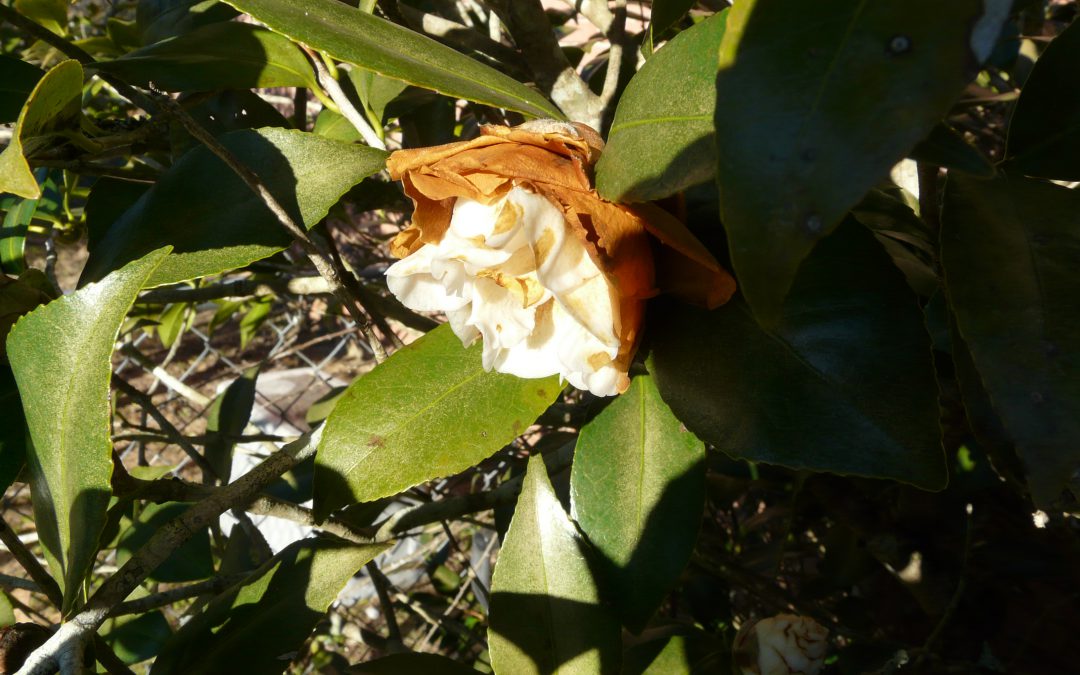
by Larry Williams | Jan 27, 2015
Do you have camellia plants with flower buds that fail to open? Here are possible causes for this problem.
For more information on camellias, contact the UF/IFAS Extension Office in your County or visit http://edis.ifas.ufl.edu/ep002 to access the publication, “Camellias at a Glance.”

by Larry Williams | Dec 9, 2014
From about mid November or December to March, deciduous trees have little to no foliage making us more aware of their shapes, forms and barks.
Here are a few trees to consider for adding winter appeal to your landscape.
Gary Knox, UF/IFAS Horticulturist, describes the crapemyrtle’s winter interest perfectly in his publication, “Crapemyrtle in Florida.” Knox writes, “When the leaves fall in winter, the crape myrtle becomes a living sculpture. The trunk and branches of tree-form plants have an attractively gnarled, sinuous character with smooth bark. Strips of bark peel off (exfoliate) in early summer to reveal mottled new bark ranging in color from pale cream to dark cinnamon to rich brown to bright orange.”
Here are some recommendations for crapemyrtles with attractive bark. ‘Acoma’ is an outstanding semi-dwarf hybrid reaching a mature height of 10 to 15 feet that has creamy beige bark and snow white flowers. ‘Apalachee’ is another outstanding selection with cinnamon orange bark and light lavender flowers. Its mature height is about 20 feet. The cultivar ‘Osage’ produces dark orange bark and medium pink flowers with a 20-foot mature height. ‘Fantasy’ is a large maturing variety growing to more than 20 feet tall with outstanding red orange bark and white flowers. More cultivars are listed in Knox’s publication available at http://edis.ifas.ufl.edu/MG266.
River birch is another tree with unusual papery peeling bark. The cultivar ‘Heritage’ is the closest to a paper white birch that will tolerate our hot summers. Expect a river birch to reach 40 to 50 feet in height and 25 to 35 feet in width.
Cultivars of Ulmus parvifo

Apalachee Crapemyrtle Bark Photo Credit: UF/IFAS
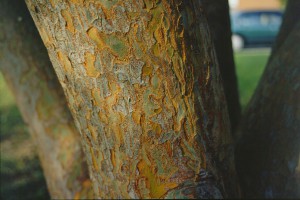
Drake Elm Bark Photo Credit: UF/IFAS
lia, Chinese elm, provide winter interest. “The showy, exfoliating bark reveals random mottled patterns of gray, green, orange and brown, adding great textural and visual interest, especially to its winter silhouette,” writes Ed Gilman, UF/IFAS Horticulturist, in his factsheet on Chinese Elm. This and other tree factsheets are available at http://hort.ifas.ufl.edu/woody. ‘Drake’ and ‘Allee’ are two popular Chinese elm cultivars. Chinese Elm can reach 80 feet in height but is more often seen at 40 to 50 feet with an equal spread.
American Hophornbeam, Ostrya virginiana, is an underused tree that grows to about 50 feet in height. Its grayish bark peels off in longitudinal strips revealing orange patches underneath.
Acer buergeranum or trident maple is a small, underused and hard to find tree. It usually is seen with multiple stems originating fairly low on the trunk giving the small tree a bushy appearance. It has noticeable orange-brown peeling bark.








